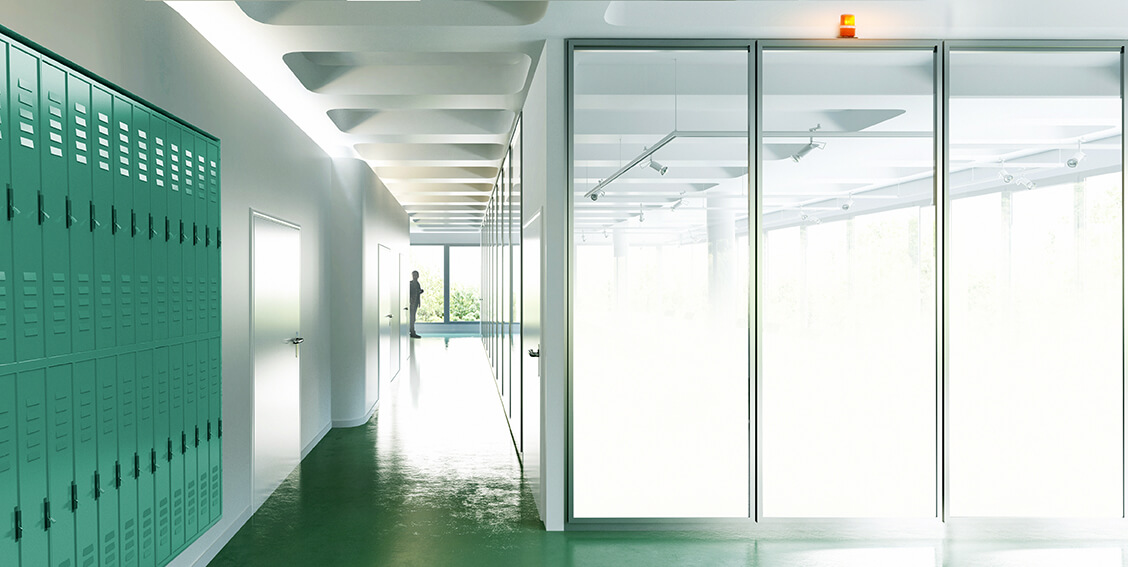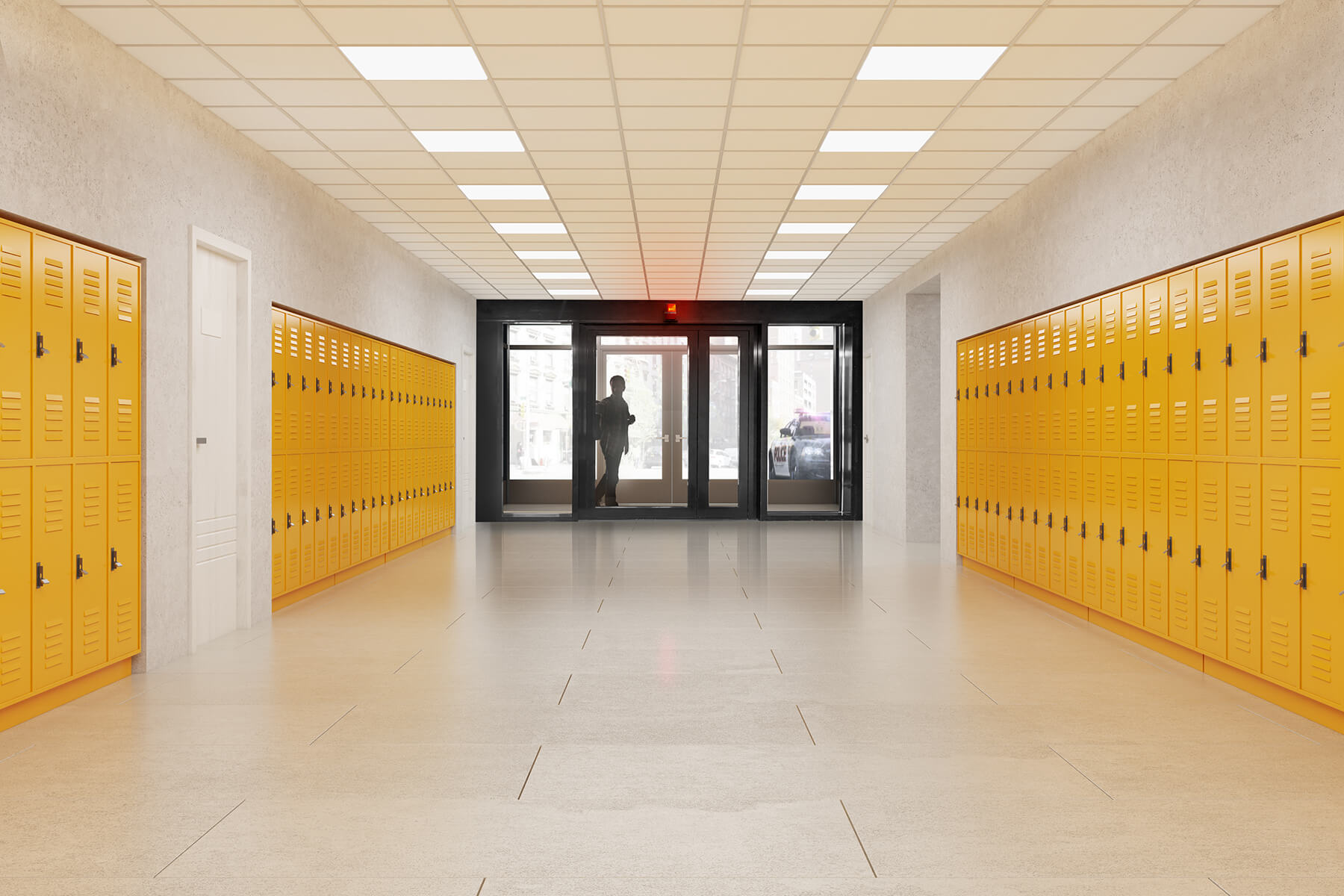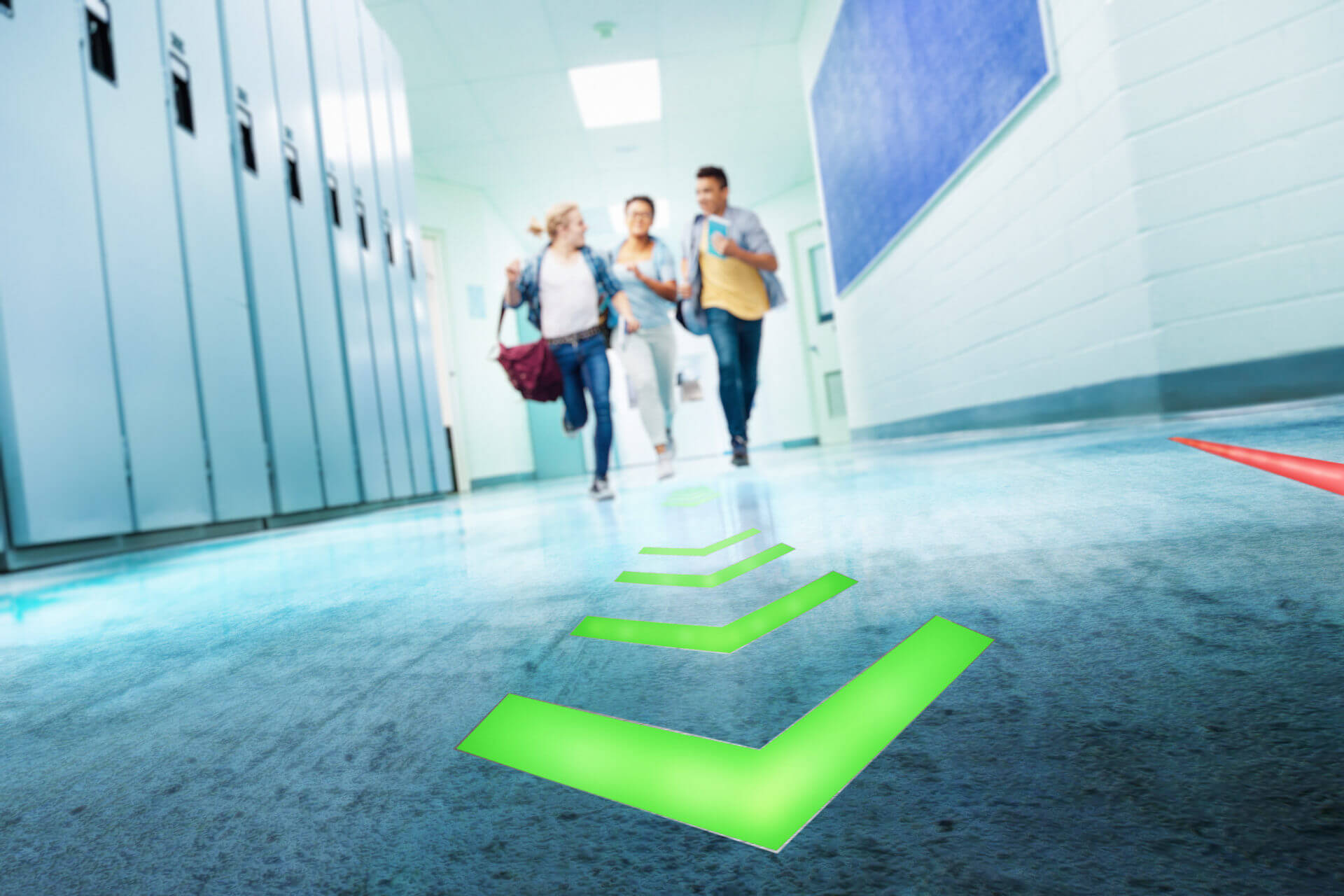Can a Building Help Thwart the Next Active Shooter?

In the spring of 2018, Professor Burçin Becerik-Gerber was in London, as part of her Rutherford Fellowship at the Alan Turing Institute. There she received a troubling call: There was an active shooter threat near her sons’ elementary school in Los Angeles.
As she listened to the series of voicemails detailing an ongoing threat and the safety measures being taken, she felt helpless. Even after the incident was resolved, Becerik-Gerber struggled to feel relief.
As that uneasy feeling lingered, Becerik-Gerber, a professor of civil and environmental engineering, decided to act. In an effort to help mitigate the growing epidemic of mass shootings — which hit a reported 417 incidents in the U.S. in 2019, according to Gun Violence Archive — she began thinking not from the perspective of guns but from the perspective of buildings. “I know buildings very well and how they are designed and operated,” she said. “From what I know, how can I help?”
That summer, she partnered with Gale Lucas, her co-founder at the USC Viterbi School of Engineering’s Center for Intelligent Environments (CENTIENTS), and Erroll Southers, a professor of the practice in national and homeland security at the USC Sol Price School of Public Policy. The researchers began to look at the problem from another angle: interactive building design.
Combining their expertise in security, engineering, human-building interaction, computer science and psychology, the team created virtual environments — for schools and offices — to help real people interact with different building features in the event of an active shooter situation. In the coming months, the researchers will bring in over 200 real-world teachers and office workers to test the virtual reality environment and gather data on the security features embedded within it.
Said Southers: “When I came to the project it was with the question: Can we design a space that inherently makes a person safer, with almost no training at all? In other words: intuitive.”
Although the work is in its early stages, here are five visions of how intelligent buildings could make a difference.
Perimeter Weapon Surveillance
Ideally, an active threat is located before it arrives in the building. But often places like schools and offices are wide open. “Depending on where it is located, you may be able to enter a school from any angle, without encountering a single barrier,” Southers said. “For example, for many years, USC’s campus was unfenced until finally fencing was installed to limit points of entry to a few locations.”
Once entry points are limited, the field through which a shooter can enter is significantly narrowed, allowing for more surveillance options. So how is a shooter detected? Smart surveillance systems already in use can reportedly be programmed to detect anything from a bulletproof vest to a handgun. If the system scans for and locates such a device at an access point, it will automatically initiate lockdown of the building in question, securing the occupants and isolating them from the shooter.
Shooter Tracking
Once the shooter is inside the building, the situation can devolve into a guessing game. A gunshot detection system could use sound triangulation techniques to determine the position of the shooter after every shot. This information could be relayed via various communication devices — for example, cellphones or classroom emergency alert screens — that could advise building occupants, as well as security personnel, as to where the shooter is located. This information could help law enforcement secure the shooter while identifying parts of the building that can be safely entered or evacuated for building occupants.
Said Becerik-Gerber: “During building emergencies, people are ‘information hungry’ and make efforts to learn more about the emergency situation. Whereas it was once thought keeping information from occupants would help keep them calm and protected, new studies show that immediate reporting on emergencies can motivate people to evacuate more quickly. In this case, the building can provide information directly to the occupants.”

Mantrap
Many buildings have double sets of doors — often used for climate control — with a small entryway between them. What if that space could be used to isolate an active shooter?
“We were talking about how to lock the building occupants in a room, to keep them safe from the shooter,” Becerik-Gerber said. “But what if we could lock the shooter in a room? Then we can target the threat directly.”
This “mantrap” system could work in two ways. “The first line of defense aims to keep the shooter from entering the building in the first place,” Lucas said. “The shooter walks through one set of doors. If the building detects a firearm on the person, it locks the second set of doors, so he cannot go inside the building.”
Alternately, if the shooter gets inside the building with his weapon, a movable set of walls or doors (for instance, in a narrow corridor) could be triggered to lock the shooter into place.
Automated 911 Call
Building occupants often participate in disaster- and active threat-related trainings, like fire drills or shooting drills. However, without the expertise of law enforcement or security personnel, they are more likely to panic or freeze in a difficult situation. Instead of relying on occupants to find ways to access emergency personnel — which could also put them at additional risk — why not have the building do the job for them? In this scenario, if a building senses an active shooter, through the sound of a bullet or the physical detection of a weapon, it will immediately call first responders. Coupled with other systems, it could also help lead police to the shooter’s exact location in the building.

Evacuation Guidance
While a common instinct is to flee during emergency situations, it can be difficult to walk freely toward an exit when an active shooter is present. Without knowing the shooter’s exact location, all paths seem to present imminent danger. But what if the building could use sensors tracking the active shooter as inputs to create a safe escape route? Once the shooter’s location is known, these sensors would help lead occupants outside by identifying and highlighting — through flashing arrows built into the building floor — a “safe path.” Ultimately, this feature could help aid a full building evacuation, essentially disarming the active threat without disarming the shooter.
Said Becerik-Gerber: “Since uncertainty is an important factor that prolongs the decision-making phase, reduction of uncertainty could enable individuals to make quicker decisions. Studies have shown that announcements providing timely instructions are more effective than a siren alarm, so laying out a specific path for evacuation could be very effective.”
Dynamic (Glass) Walls
Increasing the number of barriers in a building can cause bottlenecks and hinder smooth traffic flow. But in an emergency situation, these barriers could be life-saving. What if a safety wall could be erected as soon as the building detected a threat? “Imagine a school and you drop a shield in front of a classroom; you’re protecting everyone in that classroom from intentional and unintentional fire,” Lucas said.
While these are all cool concepts, they would be costly ones, too. Testing out potential building security features and determining whether or not they are worthwhile investments is one of the main goals of the VR environment. “If you’re going to implement a new security measure, it’s important to know how the occupants are going to respond to it. If it doesn’t serve its purpose, there’s no reason to spend millions of dollars,” Lucas said.



